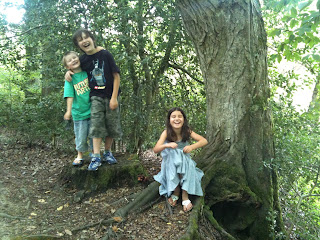I want to look at comfort-eating habits, how and where they begin and why.
I've said in previous posts that food can often induce the reward centres in our brains to deliver the feel-good chemical, dopamine and that even thinking about and preparing food can release endorphins to promote this.
These feelings about food can stem from childhood memories of comfort and safety and the foods associated with these times. Some of our comfort foods are fine: soft boiled egg, marmite on toast, soup. Others are less good: biscuits, cakes, ice cream.
Childhood can also shape our attitudes towards incentives and rewards. How often do you reward yourself with an edible treat? How often is that edible reward 'naughty but nice'? Is it ever healthy and nutritious? Do you ever reward yourself with a walk on the beach or a tramp through the woods?
 Rewarding children with anything edible is not a great habit to get into as when they reach adulthood and feel they have done a good day's work, they are going to reach for what they have observed and learnt from us to be a reward.
Rewarding children with anything edible is not a great habit to get into as when they reach adulthood and feel they have done a good day's work, they are going to reach for what they have observed and learnt from us to be a reward. It may be difficult to change what we, as adults, see as comfort food and ways of rewarding ourselves (though not, I suggest, impossible) but it isn't too late for our children.
 The point I'm trying to make is that we are in a position to shape the future comfort foods of our children. Do we want our children, when they are older, reaching for the ice cream, cakes and biscuits when they are feeling a little low or would we rather they munched their way through a bowl of fresh fruit or veggies? Would we rather they treated themselves with a family sized bar of chocolate or a tramp through the woods?
The point I'm trying to make is that we are in a position to shape the future comfort foods of our children. Do we want our children, when they are older, reaching for the ice cream, cakes and biscuits when they are feeling a little low or would we rather they munched their way through a bowl of fresh fruit or veggies? Would we rather they treated themselves with a family sized bar of chocolate or a tramp through the woods?There is another way. We need to practise what we preach, lead by example and show that healthy, nutritious treats are just as rewarding, if not more rewarding than empty calories.
I'm going to be taking more notice from now on, of the way I give treats to my children. If my husband and I are making an effort to eat clean for health reasons, then why would we want to feed nutrition-free junk to our kids, especially in order to treat and reward them? It seems bizarre that the very foods we know to be bad for us, we voluntarily give to our children to say, 'Well done!' or, 'there, there.'
I'm not saying my kids never get cakes. Sometimes they eat sweets and they have even been known to have pizza and Coke (never diet, of course!)
But they are equally happy to accept sardines on granary toast as comfort food and a new book and a box of raw veggies as a dopamine-inducing treat.
Krish x










